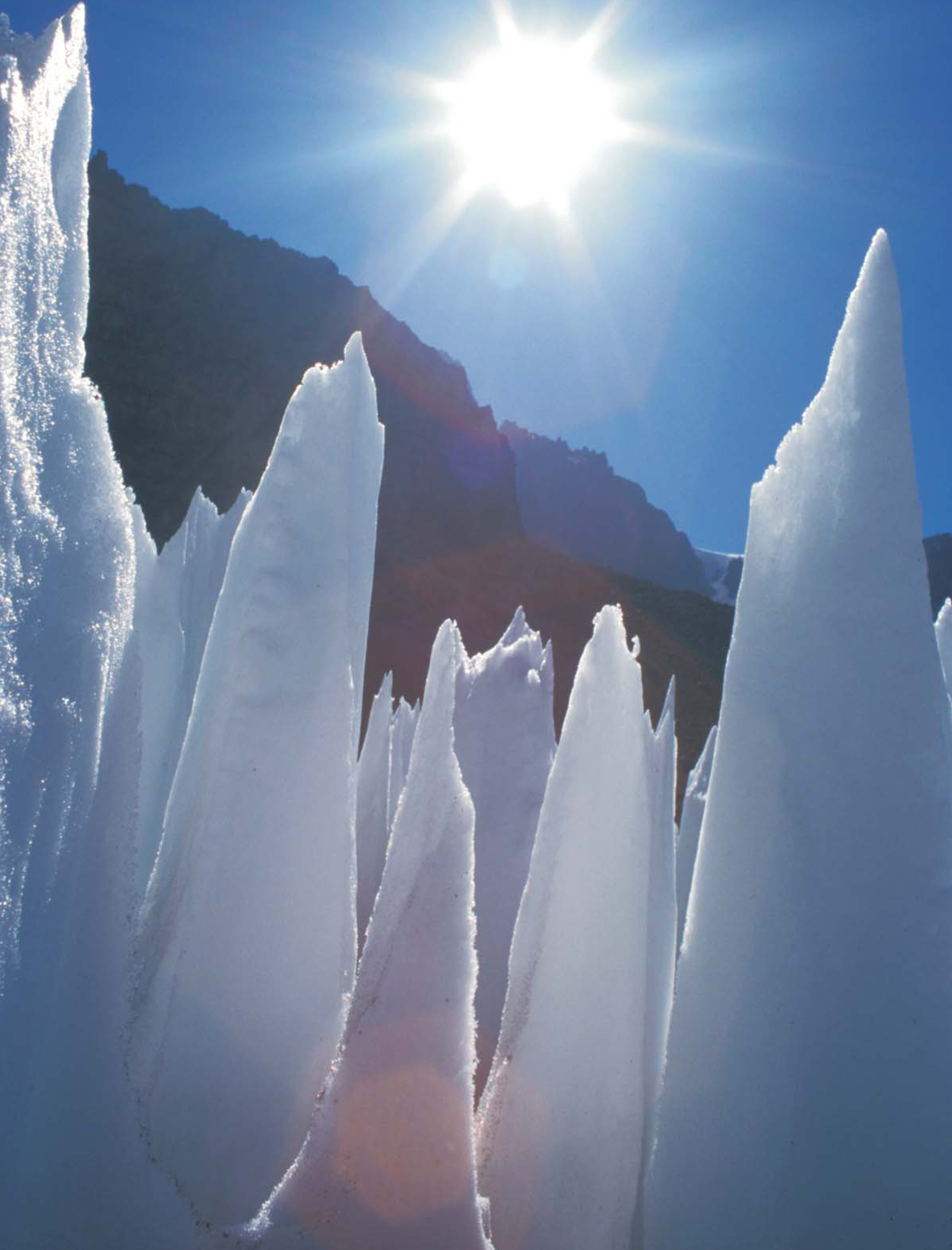Penitentes
DOI: 10.1063/1.2435660
These ice pinnacles, called penitentes, form during the dry Andean summers on high-altitude glaciers through a self-amplification process of ablation by direct and reflected radiation. Sunlight will induce sublimation in various places on a glacier’s surface, producing depressions that focus sunlight and cause further sublimation. As the process continues, the depressions deepen into troughs and leave behind peaks that can reach 1–4 m high—such as the ones seen here. Through the same surface instability, laser ablation of materials can lead to similar surface structures on the micron scale.
Penitente formation can be affected by dirt and debris on the surface of the glacier. And penitentes, in turn, can affect glacial energy balances, melting, and local water runoff. Vance Bergeron, Charles Berger, and Meredith Betterton have recently generated small penitentes 1–5 cm high in the laboratory, thereby allowing the controlled study of penitente formation and evolution. (V. Bergeron, C. Berger, M. D. Betterton, Phys. Rev. Lett. 96 , 098502, 2006 http://dx.doi.org/10.1103/PhysRevLett.96.098502
To submit candidate images for Back Scatter, visit http://www.physicstoday.org/backscatter.html

Photo © Javier Corripio, ETH Zürich.

